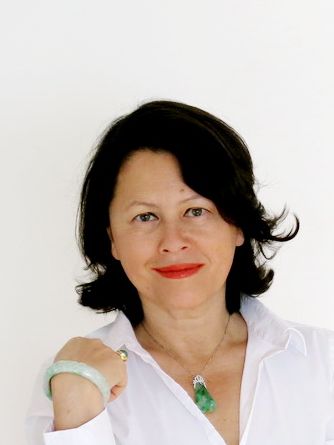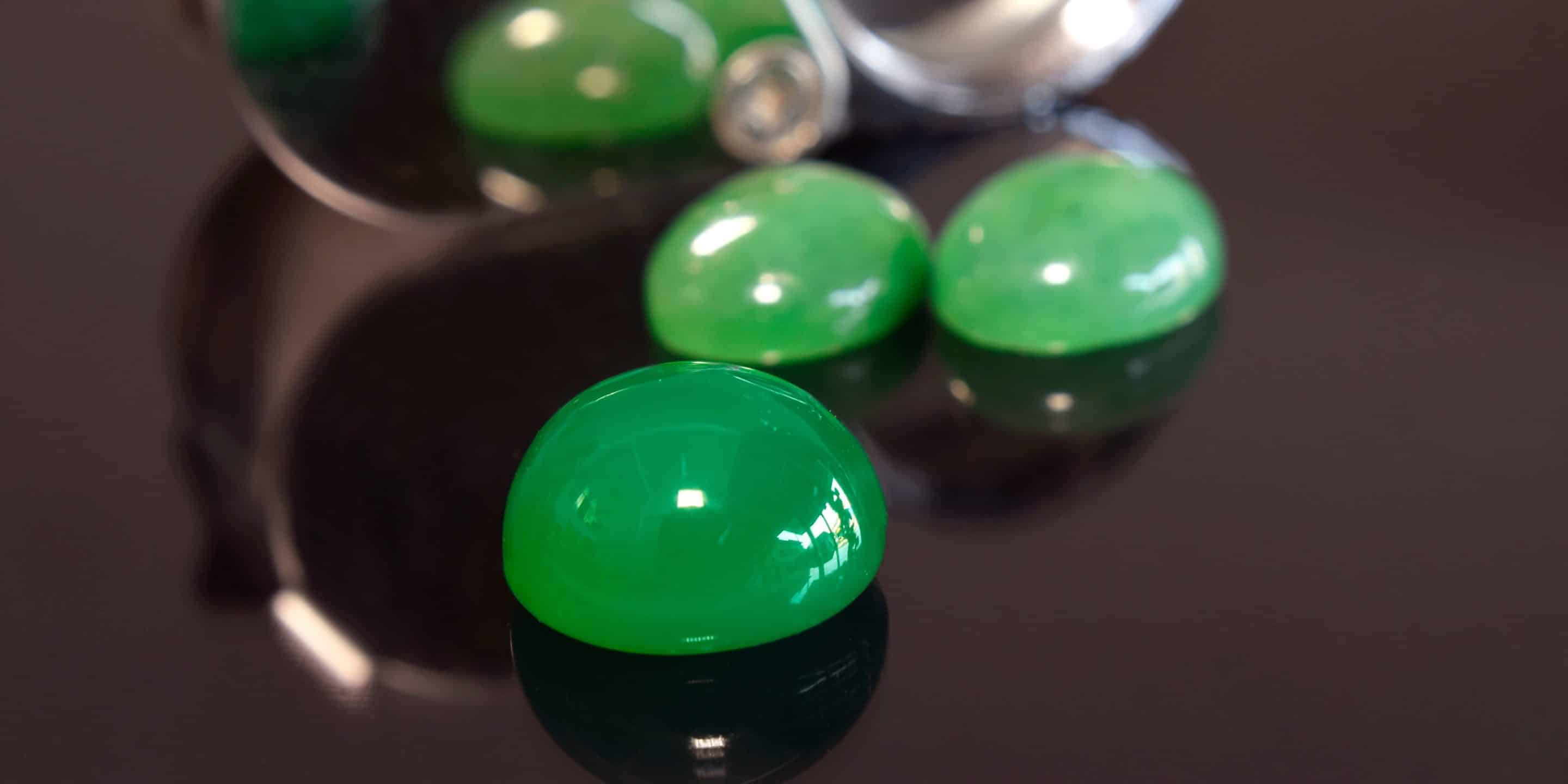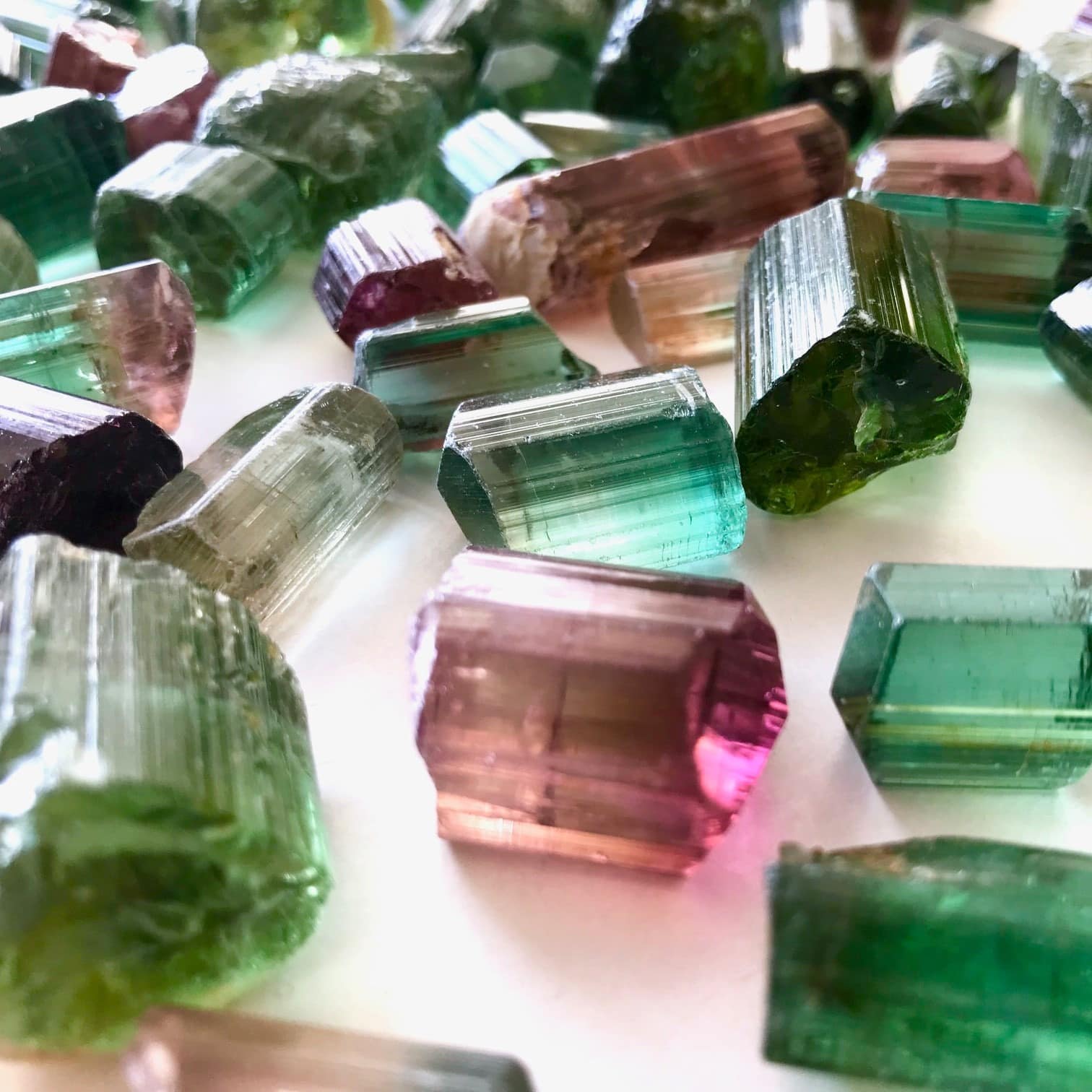It’s been a while since I’ve had the time to offer you a meeting with a professional in the jewellery sector. So I’m taking you to meet Caroline whose job is to trade in jade. Enjoy your reading!

1- Can you introduce yourself quickly?
My name is Caroline and I was born in 1959. I am an FGA Gemmologist and a few years ago I set up my own company with an associated website www.eurojade.fr dedicated to jade in all its forms. I also participate in trade shows in France and abroad.
2- What profession did you want to do when you were a child?
Many people of my generation studying science were oriented towards medical careers but I loved all subjects and particularly literature and modern languages. I was very young and didn’t have a precise idea: I successively thought of being an English or physical education teacher, a doctor… I had never heard of gemmology at that time anyway!
3- And finally, what is your current job?
I am a gemmologist specialised in jade.
4- At what point did you feel like working in the jewellery and gems sector?
I worked in the financial sector during the first part of my career, an environment that was very far from gems and minerals. It was during a professional retraining that I decided to turn to gemology, late in life since I was almost fifty!
5- What is your initial educational background?
I passed a scientific baccalaureate, followed by university studies in economics, a postgraduate degree in international trade and a diploma in European business law.
6- And what course specifically related to jewellery and gemmology did you follow?
I attended the Gemmological Association of Great Britain (Gem-A). I graduated in London, I think I was prouder than I was of all the qualifications I had gained in my youth! I am a member of the French, English and Scottish gemological associations.
7- Do you have any family in this business?
Absolutely no one!
8- Why jade ?
I had a very vague idea of jade like most of us and believed all the misconceptions about it. But strangely enough, I had always been attracted to the word “jade” and to the stone. Some people say it’s because of my background (Vietnamese on my father’s side) but I don’t believe it, not having an Asian background. In fact, a few years ago, I was still a gemology student on holiday in Canada, when I spotted a little shack on the side of the road with a few blocks of stone around it. I stopped and really “fell in love” with these rough blocks which were British Columbia nephrite jade. I bought a book sold on the spot called “Jade Fever” by Stan Leaming, and I always thought that it was this providential stop on the side of the road that decided my new professional life… which I never imagined!
9- What do you like about this stone?
Jade is a stone apart in the world of gems. First of all because jade refers to jadeite and nephrite, which have different compositions. This is why I always speak of jadeite and nephrite jade, to avoid confusion. Then because its symbolism is very strong in very diverse civilizations: Asia, Latin America, New Zealand… It is a stone that is beautiful – at least for me! – it is a stone that is beautiful – at least to me! – both cut and uncut and has colours ranging from translucent white to black, yellow and red. Jade is not always green, you know! And if it is the most misunderstood stone in the world, it is also the most imitated.
10- Being self-employed is an adventure, can you tell us what a typical day/week is like?
It’s very varied. As I am on my own, I take care of everything like any other small business owner. Managing my website, sourcing quality products from a network of suppliers that I have qualified during my travels. I also spend a lot of time writing articles about jade (in museums or places I visit) that I put online to inform my readers as well as possible. And thanks to the internet, I stay in touch with my customers and internet users while I am travelling. Although I mainly sell on the web, I also try to meet my clients as much as possible. It’s extremely time-consuming but exciting.
11- You also do trade shows, how do you manage?
I don’t do many shows, and I regret it because it’s an opportunity for visitors to discover the “real” jade, natural, untreated and its varieties, which they see very little of. I sometimes give lectures on jade at these fairs. But I have reduced my participation because some organisers mix honest exhibitors with others selling imitations or treated jades without disclosing it, which is contrary to the law (clarification on gem treatments, nda). The jade market is 90% imitation and treated jade, and it is therefore necessary that visitors are clearly informed of what they are buying, which is not the case at present. This situation can be extended to all stones with an invasion of dubious products that pollutes the market and discredits those who want to do their job properly. On the internet, imitations and treated products are just as present, but my site has a strong image that allows me to stand out from the scammers on the web. I try to give as many explanations as possible. Furthermore, I certify everything I propose, which means that I am legally committed, which to my knowledge nobody else does, at least in my field.
12- What are the most common questions from clients?
The most common question, whether from professionals or individuals, is: how can you tell the difference between “real” jade and fake? To this, I answer that there is no “trick” to know for sure if the jade is real, if it is treated or if it is imitated. In a fast-paced world, knowledge of jade takes time and hard work. Only experience and a solid foundation can provide a sound judgment. You have to have seen thousands of stones and rocks. I am very interested in the rough and this aspect goes beyond gemmology to include mineralogy and geology: it is essential to understand jade as a whole and in all its complexity. I have one regret: not to have started younger because a lifetime is not enough to know jade!
13- I suppose you go abroad for your purchases. In which countries more precisely? How does it work on the spot ?
I love to travel to meet my suppliers, but also to visit mines, if possible, or jade cutting workshops, to exchange with the people involved in the whole production chain. I am also a great lover of museums and wherever I go I try to visit them. For example, I recently saw the Han exhibition in Hong Kong and was able to compare it to the one in Paris earlier, which was slightly different. I then report on it for my website when I get back (or rather I try to, as I’m months behind!). Contrary to what many people may think, it is not always by going to the precise place of production that one finds the best products, especially for jade. But I regularly visit countries producing jade (Myanmar, Guatemala, China, Russia…) or working with it. I am atypical because I am a woman in her fifties, travelling alone and speaking several languages. I must say that I don’t meet many like me and this sometimes surprises my interlocutors who find it difficult to understand the passion of a European woman for jade!
14- This profession is full of stories and anecdotes. Do you have one or two to tell us?
As I said earlier, trade shows allow you to be in direct contact with customers. A few weeks ago, I was exhibiting at a mineral show in Paris and, as is often the case at shows, I explained what jade is, showed samples of natural jade, treated jade and imitations. One visitor seemed very interested and asked many questions. Finally, in a peremptory tone, this person said to me: “That’s all very well, but your jades are not coloured enough, you should have used more dye, and on top of that the colour is not even!” and she ran off to buy a jadeite jade dyed in a gaudy colour at a much higher price than my natural jades from the stand opposite! It makes you smile afterwards, but it is still very offensive!
Another anecdote concerns the persistent Asian belief that a jade rush, if it breaks, has protected you and prevented you from being ‘broken’. A client came to me because her ‘imperial’ jade rush had broken in a serious accident from which she had escaped unscathed. She asked me if it could be repaired so that she could wear the emerald green “talisman” that had saved her life again. But the ring was made of coloured glass!
15- Finally, what advice would you give to young people who want to enter this profession and work with gems?
You have to remember that a diploma, whatever it may be, is not enough in itself. It is only a doorway that only gives the right to learn, again and again, and to improve. You have to have an open mind, be modest, never think you know everything, read, visit museums, exhibitions, to “get a good look”. Meet people from all professions, gemologists, jewellers, lapidaries, mine owners, suppliers, academics, etc. Travelling to go back to the source and understand the circuit that a stone makes, before it reaches the final consumer. Cross-referencing information, thinking things through to form your own opinion. Learning foreign languages, at least English. And be passionate and honest.
See you soon!







